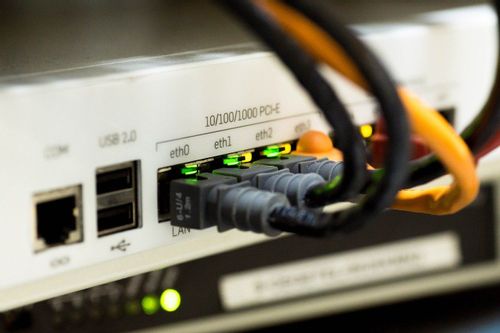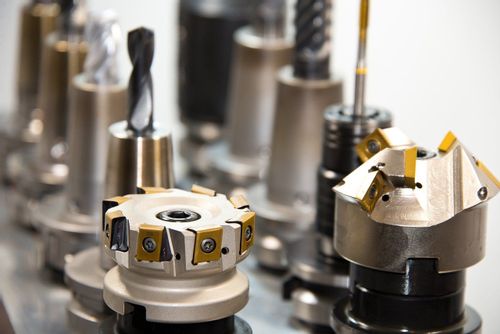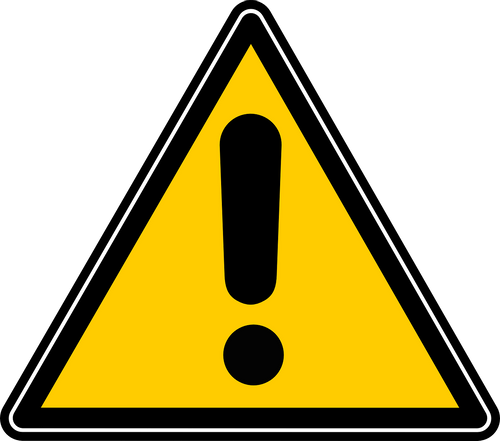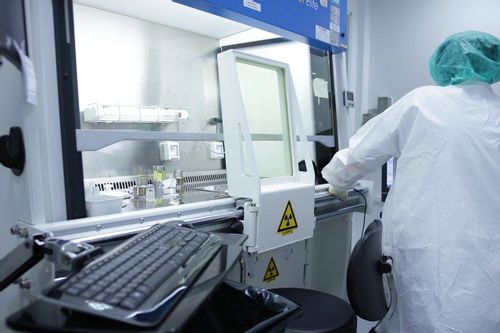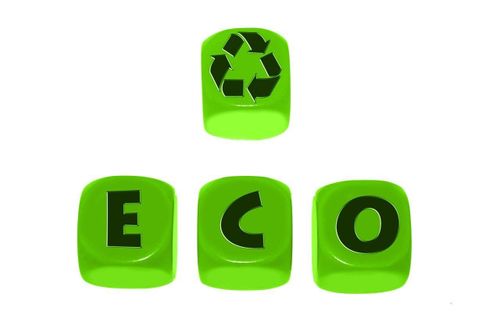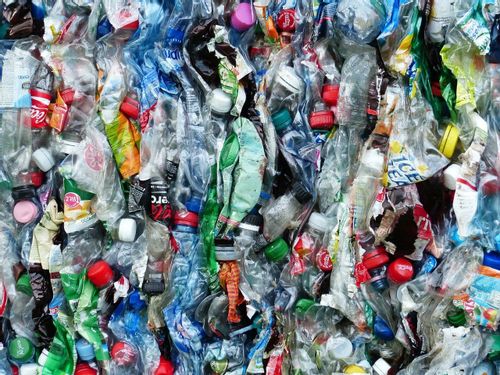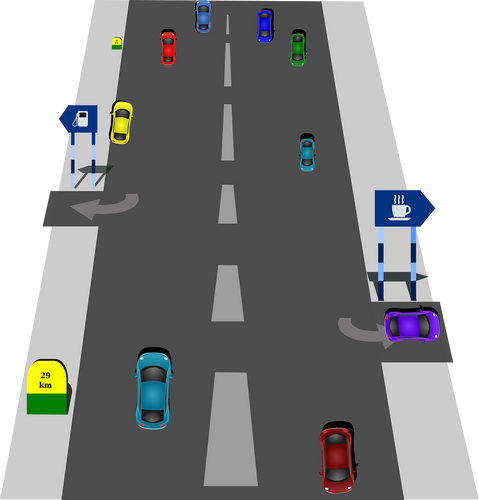Standards Packages
iTeh together with SIST has developed and compiled a comprehensive collection of standard packages to support your standard requirements. Our packages cover an array of content that includes quality management, risk management, road vehicles, machine safety, and much more. With over 200 packages to choose from, you are sure to find a collection to suit your standard needs.
Latest Standards
This document is applicable to lead-acid batteries with a nominal voltage of 12 V, used primarily as power source for the starting of internal combustion engines (ICE), lighting and also for auxiliary equipment of ICE vehicles. These batteries are commonly called "starter batteries". Batteries with a nominal voltage of 6 V are also included in the scope of this document. All referenced voltages need to be divided by two for 6 V batteries. The batteries under the scope of this document are used for micro-cycle applications in vehicles which can also be called Start-Stop (or Stop-Start, idling-stop system, micro-hybrid or idle-stop-and-go) applications. In cars with this special capability, the internal combustion engine is switched off during a complete vehicle stop, during idling with low speed or during idling without the need of supporting the vehicle movement by the internal combustion engine. During the phases in which the engine is switched off, most of the electric and electronic components of the car need to be supplied by the battery without support of the alternator. In addition, in most cases an additional regenerative braking (recuperation or regeneration of braking energy) function is installed. The batteries under these applications are stressed in a completely different way compared to classical starter batteries. Aside of these additional properties, those batteries need to crank the ICE and support the lighting and also auxiliary functions in a standard operating mode with support of the alternator when the internal combustion engine is switched on. All batteries under this scope need to fulfil basic functions, which are tested under application of EN 50342 1:2015.
This document is applicable to batteries for the following purposes:
- Lead-acid batteries of the dimensions according to EN 50342 2 for vehicles with the capability to automatically switch off the ICE during vehicle operation either in standstill or moving (“Start-Stop”);
- Lead-acid batteries of the dimensions according to EN 50342 2 for vehicles with Start-Stop applications with the capability to recover braking energy or energy from other sources.
This document is not applicable to batteries for purposes other than mentioned above, but it is applicable to EFB delivered in dry-charged conditions according to EN 50342 1:2015, Clause 7.
NOTE The applicability of this document also for batteries according to EN 50342 4 is under consideration.
- Standard29 pagesEnglish languagesale 10% offe-Library read for1 day
The present document specifies technical characteristics and methods of measurements for Point-to-point (P-P) Digital Fixed Radio Systems (DFRS) operating in frequency bands allocated to Fixed Service (FS) from 1 GHz to 174,8 GHz, corresponding to the appropriate frequency bands from 1,4 GHz to 174,8 GHz as described in relevant annexes B through L. Systems in the scope of the present document are generally intended to operate in full Frequency Division Duplex (FDD) and cover also unidirectional links applications. Time Division Duplex (TDD) applications, when possibly applicable in a specific band, are explicitly mentioned as appropriate in the relevant annexes B through L. Other possible prescriptions, limitations and requirements, for operation in specific bands are also explicitly mentioned, as appropriate, in the relevant annexes B through L. Systems in the scope of the present document are intended to operate only in combination with directive fixed gain antennas respecting the technical requirements in ETSI EN 302 217-4 [6]. Systems in the scope of the present document may be composed by equipment without antennas (see informative annex Q for background) or equipment including integral (but physically detachable) or dedicated antenna. Systems including integral antennas physically undetachable from the radio equipment are not in the scope of the present document (see note 1).
NOTE 1: For additional information, the rationale is that the present document as well as ETSI EN 301 126-1 [1] (radio equipment parameters testing) do not provide radiated test methods and ETSI EN 301 126-3-1 [2] (antenna parameters testing) does not provide test methods for undetachable antennas; future revisions could fill this vacancy.
NOTE 2: The relationship between the present document and the essential requirements of article 3.2 of Directive 2014/53/EU [i.1] is given in annex A.
- Standard173 pagesEnglish languagesale 15% off
- Standard173 pagesEnglish languagesale 15% off
- Standard173 pagesEnglish languagesale 10% offe-Library read for1 day
This document applies to the determination of beta emitters activity concentration using liquid scintillation counting. The method requires the preparation of a scintillation source, which is obtained by mixing the test sample and a scintillation cocktail. The test sample can be liquid (aqueous or organic), or solid (particles or filter or planchet).
NOTE Planchet are samples, described in 8.5, out of solid material e.g. small metal, plastic or glass pans or support material made of these materials
This document describes the conditions for measuring the activity concentration of beta emitter radionuclides by liquid scintillation counting[2].
The choice of the test method using liquid scintillation counting involves the consideration of the potential presence of other beta-, alpha- and gamma emitter radionuclides in the test sample. In this case, a specific sample treatment by separation or extraction is implemented to isolate the radionuclide of interest in order to avoid any interference with other beta-, alpha- and gamma-emitting radionuclides during the counting phase.
This document is applicable to all types of liquid samples having an activity concentration ranging from about 1 Bq·l−1 to 106 Bq·l−1. For a liquid test sample, it is possible to dilute liquid test samples in order to obtain a solution having an activity compatible with the measuring instrument. For solid samples, the activity of the prepared scintillation source shall be compatible with the measuring instrument.
The measurement range is related to the test method used: nature of test portion, preparation of the scintillator - test portion mixture, measuring assembly as well as to the presence of the co-existing activities due to interfering radionuclides.
Test portion preparations (such as distillation for 3H measurement, or benzene synthesis for 14C measurement, etc.) are outside the scope of this document and are described in specific test methods using liquid scintillation[3][[4][5][6][7][8][9][10].
- Standard31 pagesEnglish languagesale 10% offe-Library read for1 day
This document gives guidelines for the choice of non-destructive testing (NDT) methods for welds in metals and for the evaluation of the results for quality control purposes, based on quality requirements, material, weld thickness, welding process and extent of testing.
This document also specifies general rules and standards to be applied to the different types of testing, for the selection of the method, the techniques and the acceptance levels.
Acceptance levels cannot be a direct interpretation of the quality levels defined in ISO 5817 or ISO 10042. They are linked to the overall quality of the produced batch of welds.
The requirements specified in this document for acceptance levels for NDT conform with quality levels stated in ISO 5817 or ISO 10042 (moderate, intermediate, stringent) only on a general basis and not in detail for each indication.
Annex A gives correlations between quality levels, testing levels and acceptance levels for specific testing techniques.
Annex B gives an overview on specific testing techniques of standards linked to quality levels, acceptance levels and testing methods.
- Standard24 pagesEnglish languagesale 10% offe-Library read for1 day
This document defines terms used in the field of soil quality.
- Standard78 pagesEnglish languagesale 10% offe-Library read for1 day
This document specifies a test method for determining the mechanical viscoelastic properties of interlayer materials. The interlayers under examination are those used in the production of laminated glass or laminated safety glass. The shear characteristics of interlayers are needed to design laminated glass in accordance with EN 16612:2019 and EN 19100 (all parts).
Parameters of the Prony series, widely used in numerical simulation, can be derived from the measurements in Annex C.
- Standard34 pagesEnglish languagesale 10% offe-Library read for1 day
This document specifies the conditions for determination of the axial tensile properties of ceramic matrix composite (CMC) tubes with continuous fibre-reinforcement at elevated temperature in air, vacuum and inert gas atmospheres. The applicability of this document is specific to tubular geometries because fibre architecture and specimen geometry factors in composite tubes are distinctly different from those in flat specimens.
This document provides information on the axial tensile properties and stress-strain response in temperature, such as axial tensile strength, axial tensile strain at failure and elastic constants. The information can be used for material development, control of manufacturing (quality insurance), material comparison, characterization, reliability and design data generation for tubular components.
This document addresses, but is not restricted to, various suggested test piece fabrication methods. This document is primarily applicable to ceramic matrix composite tubes with a continuous fibrous-reinforcement: unidirectional (1D, filament winding and tape lay-up), bi-directional (2D, braid and weave) and multi-directional (xD, with x > 2), tested along the tube axis.
- Standard34 pagesEnglish languagesale 10% offe-Library read for1 day
This document specifies requirements for protective provisions against the effects of stray currents, which result from the operation of DC electric traction power supply systems.
As several decades' experience has not shown evident corrosion effects from AC electric traction power supply systems, this document only deals with stray currents flowing from a DC electric traction power supply system.
This document applies to all metallic fixed installations which form part of the traction system, and also to any other metallic components located in any position in the earth, which can carry stray currents resulting from the operation of the railway system.
This document applies to all new DC lines and to all major revisions to existing DC lines. The principles can also be applied to existing electrified transportation systems where it is necessary to consider the effects of stray currents.
This document does not specify working rules for maintenance but provides design requirements to allow maintenance. The range of application includes:
a) railways,
b) guided mass transport systems such as:
1) tramways,
2) elevated and underground railways,
3) mountain railways,
4) magnetically levitated systems, which use a contact line system, and
5) trolleybus systems,
c) material transportation systems.
This document does not apply to
a) electric traction power supply systems in underground mines,
b) cranes, transportable platforms and similar transportation equipment on rails, temporary structures (e.g. exhibition structures) in so far as these are not supplied directly from the contact line system and are not endangered by the electric traction power supply system,
c) suspended cable cars,
d) funicular railways.
- Amendment10 pagesEnglish languagesale 10% offe-Library read for1 day
This document specifies requirements for enhanced visibility equipment in the form of garments, or devices, which are capable of visually signalling the user’s presence.
The enhanced visibility equipment is intended to provide conspicuity of the wearer in medium risk situations under any daylight conditions and/or under illumination by vehicles headlights or searchlights in the dark.
Performance requirements are included for colour and retroreflection as well as for the minimum areas and for the placement of the materials in protective equipment.
This document is not applicable to:
- high visibility equipment in high-risk situations, which is covered in EN ISO 20471 (for further information concerning risk situations, see Annex A);
- visibility equipment specifically intended for the head, hands and feet, e.g. helmets, gloves and shoes;
- equipment integrating active lighting, e.g. LEDs;
- visibility for low-risk situations.
- Standard32 pagesEnglish languagesale 10% offe-Library read for1 day
This document specifies the characteristics of prevailing torque hexagon high nuts (with non‑metallic insert), in steel and stainless steel, with metric coarse pitch thread M5 to M39, and with product grades A and B.
NOTE These nuts are designed with an overall height equal to mmin (as specified in ISO 898-2 and ISO 4033 for style 2) plus the prevailing torque feature. The height of the prevailing torque feature (hmax – mmin) for the non-metallic insert is identical for regular, high and thin nuts for a given diameter.
If in certain cases other specifications are requested, property classes and stainless steel grades can be selected from ISO 898-2 or ISO 3506-2.
- Standard13 pagesEnglish languagesale 10% offe-Library read for1 day
- Draft7 pagesEnglish languagesale 10% offe-Library read for1 day
This document specifies the apparatus, materials, specimen preparation, procedures, results and reports for testing the corrosion test of steel bars. This document includes an evaluation method. This document applies to reinforced concrete structures exposed simultaneously to atmospheric, splash, tidal, immersion, and buried zones in marine environments. NOTE Annex A provides test apparatus examples. Annex B illustrates test results.
- Technical specification22 pagesEnglish languagesale 15% off
- Draft22 pagesEnglish languagesale 15% off
- Draft22 pagesEnglish languagesale 15% off
This document specifies the system layer of the coding. It was developed principally to support the combination of the video and audio coding methods defined in Parts 2 and 3 of ISO/IEC 13818. The system layer supports six basic functions: 1) the synchronization of multiple compressed streams on decoding; 2) the interleaving of multiple compressed streams into a single stream; 3) the initialization of buffering for decoding start up; 4) continuous buffer management; 5) time identification; 6) multiplexing and signalling of various components in a system stream. A Rec. ITU-T H.222.0 | ISO/IEC 13818-1 multiplexed bit stream is either a transport stream or a program stream. Both streams are constructed from PES packets and packets containing other necessary information. Both stream types support multiplexing of video and audio compressed streams from one program with a common time base. The transport stream additionally supports the multiplexing of video and audio compressed streams from multiple programs with independent time bases. For almost error-free environments the program stream is generally more appropriate, supporting software processing of program information. The transport stream is more suitable for use in environments where errors are likely. A Rec. ITU-T H.222.0 | ISO/IEC 13818-1 multiplexed bit stream, whether a transport stream or a program stream, is constructed in two layers: the outermost layer is the system layer, and the innermost is the compression layer. The system layer provides the functions necessary for using one or more compressed data streams in a system. The video and audio parts of this Specification define the compression coding layer for audio and video data. Coding of other types of data is not defined by this Specification, but is supported by the system layer provided that the other types of data adhere to the constraints defined in 2.7.
- Standard324 pagesEnglish languagesale 15% off
- Draft324 pagesEnglish languagesale 15% off
This document establishes the specification of the Basic image interchange format (BIIF). This document provides a foundation for interoperability in the interchange of imagery and imagery-related data among applications. It also provides a detailed description of the overall structure of the format, as well as specification of the valid data and format for all fields defined with BIIF. Annex C contains a Model Profile of BIIF in tables to assist in profile development. The scope and field of application of this document includes the capability to perpetuate a proven interchange capability in support of commercial and government imagery, Programmer’s Imaging Kernel System (PIKS) data, and other imagery technology domains in that priority order. This document provides a data format container for image, symbol, and text, along with a mechanism for including image-related support data. This document: — provides a means whereby diverse applications can share imagery and associated information; — allows an application to exchange comprehensive information to users with diverse needs or capabilities, allowing each user to select only those data items that correspond to their needs and capabilities; — minimizes preprocessing and postprocessing of data; — minimizes formatting overhead, particularly for those applications exchanging only a small amount of data and for bandwidth-limited systems; — provides a mechanism (Transportable File Structure, TFS) to interchange PIKS image and image-related objects; — provides extensibility to accommodate future data, including objects.
- Standard143 pagesEnglish languagesale 15% off
- Draft145 pagesEnglish languagesale 15% off
- Draft145 pagesEnglish languagesale 15% off
IEC 60749-34-1:2025 describes a test method that is used to determine the capability of power semiconductor modules to withstand thermal and mechanical stress resulting from cycling the power dissipation of the internal semiconductors and the internal connectors. It is based on IEC 60749-34, but is developed specifically for power semiconductor module products, including insulated-gate bipolar transistor (IGBT), metal-oxide-semiconductor field-effect transistor (MOSFET), diode and thyristor. If there is a customer request for an individual use or an application specific guideline (for example ECPE Guideline AQG 324), details of the test method can be based on these requirements if they deviate from the content of this document. This test caused wear-out and is considered destructive.
- Draft24 pagesEnglish languagesale 10% offe-Library read for1 day
- Standard14 pagesEnglish languagesale 15% off
- Standard14 pagesFrench languagesale 15% off
- Draft14 pagesEnglish languagesale 15% off
- Draft14 pagesEnglish languagesale 15% off
- Draft16 pagesFrench languagesale 15% off
This document specifies requirements for dried lime (Citrus aurantifolia (Christm.) Swingle, Citrus latifolia Tanaka, family Rutaceae) in whole, slices and ground form. This document is also applicable to lime that has been dehydrated by the sun and artificially dried lime. Recommendations relating to storage and transport conditions are given in Annex A.
- Standard5 pagesEnglish languagesale 15% off
- Draft5 pagesEnglish languagesale 15% off
- Draft5 pagesEnglish languagesale 15% off
This document covers performance, marking requirements and test methods for a flexible sprinkler hose with fittings, attachments and anchoring components intended for direct connection to a single fire sprinkler in installations utilizing a flexible attachment to the sprinkler system piping such as clean rooms, suspended ceilings, and exhaust ducts.
- Standard18 pagesEnglish languagesale 15% off
- Draft19 pagesEnglish languagesale 15% off
- Draft19 pagesEnglish languagesale 15% off
This document specifies dimensions for heel guidings in large stamping and forming dies. It also gives example applications and an example for ordering.
- Standard5 pagesEnglish languagesale 15% off
- Standard5 pagesFrench languagesale 15% off
- Draft5 pagesEnglish languagesale 15% off
- Draft5 pagesEnglish languagesale 15% off
- Standard2 pagesEnglish languagesale 15% off
- Standard2 pagesFrench languagesale 15% off
- Draft2 pagesEnglish languagesale 15% off
- Draft2 pagesEnglish languagesale 15% off
- Draft4 pagesFrench languagesale 15% off
Benefits

Full Standards Solution
Our catalog includes not only latest standards but also full meta information about related standardization project lifecycle.

Cost Effective
Our PRICE MATCH GUARANTEE policy with multi-level volume discounts gives our clients the best option in the market. In addition, you can get access to the standards for 3, 10, or 30 days.

Stay Notified
Get alerted to the latest revisions and new standards in the Weekly Newsletter. Standards are constantly changing. Don’t miss a revision that can impact your business.
About Us
iTeh Inc is a software development and IT consulting team of professionals who provide consulting, development and implementation of solutions for all types of businesses.
In cooperation, with the Slovenian Institute of Standardization (SIST), we create a unique solution that covers all aspects of the lifecycle of Standardization organizations. iTeh Standards is a part of the solution that helps SIST to provide and sell their products to Customers.
iTeh Standards Store is an evolving project, our goal is to build long-term relationships with our customers. We believe in delivering quality services to solve our customers' challenges and define success by exceeding our customers' expectations. We are always ready to listen and our experience allows us to provide our customers with helpful effective suggestions. You can contact us by email.
We are committed to providing the best possible experience for our customers.
Compliance with international standards is increasingly becoming one of the key competitive advantages in the global market. Our company creates all conditions for the most comfortable implementation of new documents and norms in the processes carried out by your organization. Some of the key advantages of working with us are:
- Cost-effective - multi-level discounts and permanent updates of the functions give our clients the best option on the market.
- e-Library - access to standards for a period of time of your choice. It is a cost-effective solution for keeping updated with the newest standards.
- Company-wide documents - create a company account and connect all employees with access to purchased standards, e-Library documents, and packages.
- All in one spot - all purchased standards are kept in one place with controlled access by the account administrator.
- Client-centric - providing quality consulting is the prerogative and incentive to create new products that accompany your success and scale.
- 24 / 7 client support
We are dedicated to building mutually beneficial and long-term relationships with our clients. That is why our team focuses on creating services to help our customers develop and achieve new productive results.








